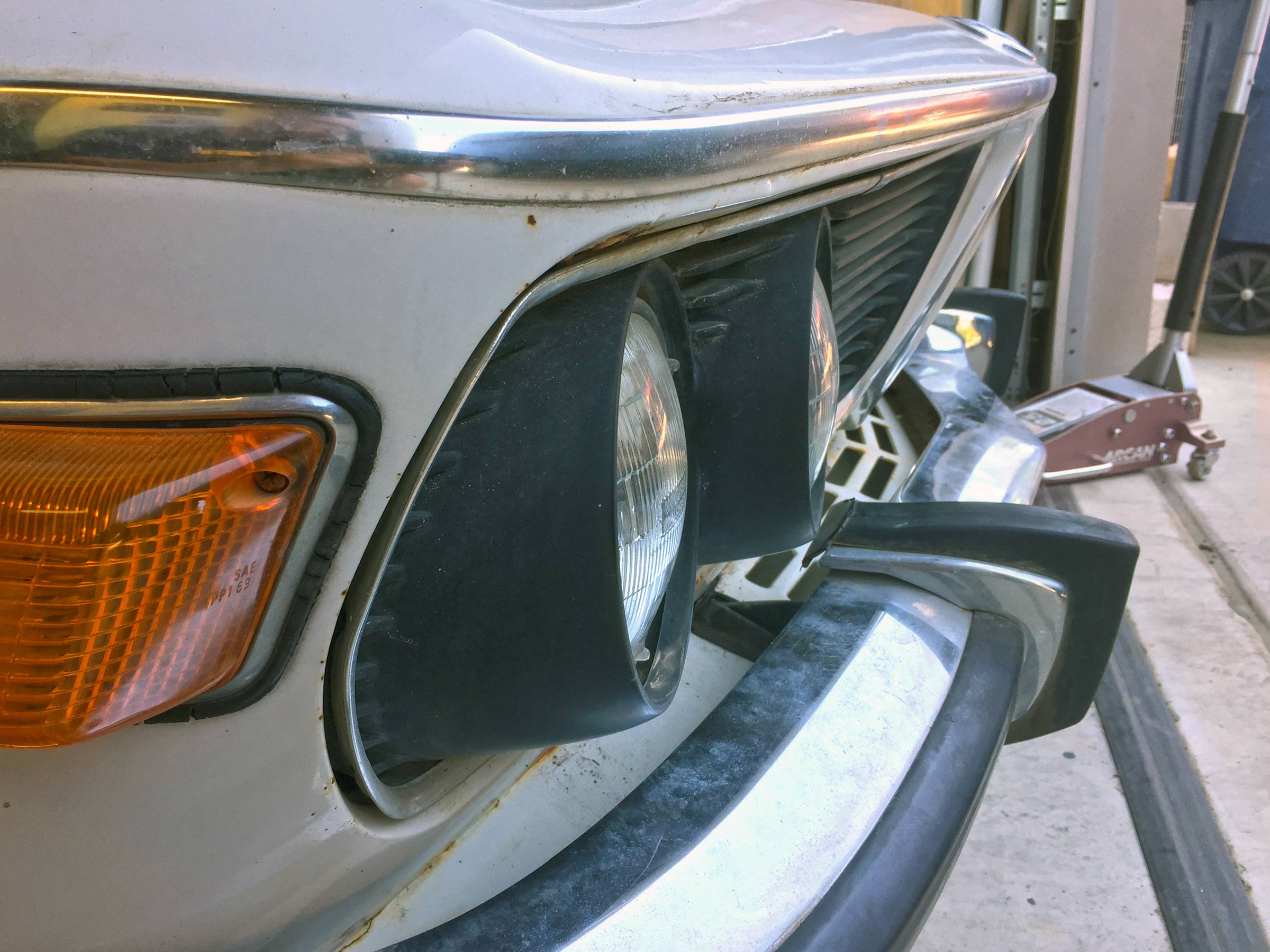So, I decided to see what lay under the odd silver patch at the edge of the trunk opening. Sure, I knew it had to be a hole of some kind, but I wasn’t prepared for the extent of the issues I discovered. It seems that there had been an extended period of leakage under the old trunk gasket and someone before the guy I bought the car from did a rather low tech patch up.
The present gasket seems to be very recent. It’s smooth and pliable. But it was stuck down to the body with a pretty sizeable film of 3M weatherstrip adhesive. Sloppy as that was, that in itself isn’t much of an issue, but what lay underneath was quite a bit more concerning. There was quite a lot of surface rust under the layer of adhesive so it was obvious there hadn’t been any proper prep of the metal surface before gluing down the gasket. As I pulled up more of the gasket, I began to see a lot of the silver tape like the small bit that was sticking out from under the gasket. Uh oh. The metal tape was stuck down with an adhesive similar to that used in duct tape. I hate duct tape. It either gets hard and brittle or gooey and sticky. This was gooey and sticky. Under the tape in several places they had pop riveted some thin sheets of aluminum over holes in the trunk edge. At the forward edge of the trunk opening, there are several inches where there is no steel remaining, only this built up mess of aluminum, tape and glue.
I haven’t managed to pull it all out yet, but I’ll obviously be fabricating new metal to repair the parts that have been rusted away. The rear window will have to come out first so it won’t happen right away. I thought I knew about all this car’s issues, but nope. I suspect that there are still a few surprises yet to find. Oh well, another opportunity to practice my metal skills, eh?






